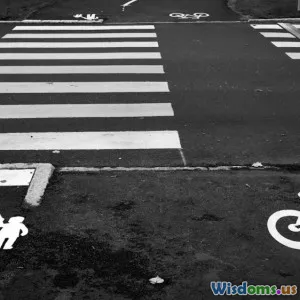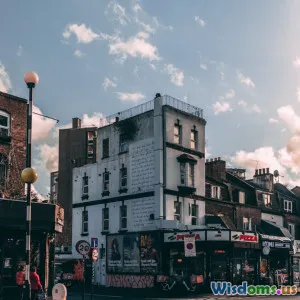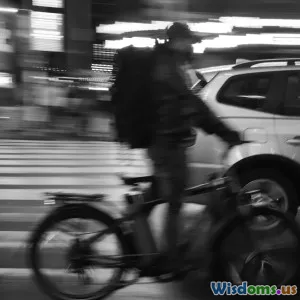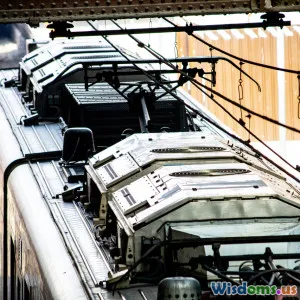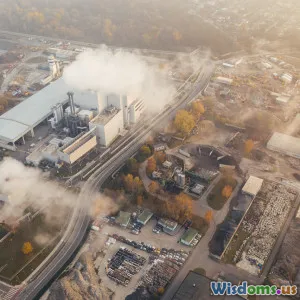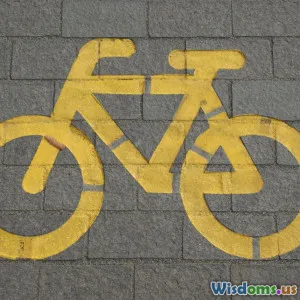
Inside a Cyclist’s Day Navigating Cities With Incomplete Bike Networks
8 min read Explore a cyclist's daily challenges in cities with fragmented bike networks and how urban planning can evolve to create seamless cycling experiences. (0 Reviews)
Inside a Cyclist’s Day Navigating Cities With Incomplete Bike Networks
Cycling has seen a massive surge in popularity across urban landscapes worldwide, doubling as both sustainable transport and daily exercise. Yet, for many cyclists, the dream of effortlessly gliding along protected, consistent bike lanes can often morph into a day riddled with disruptions, dangers, and frustration. This article journeys inside a cyclist’s typical day navigating through cities burdened by incomplete bike networks.
The Fragmented Bike Network: Reality for Many Urban Cyclists
Despite growing investments in cycling infrastructure, many cities—especially those originally designed for cars—still present patchy, disjointed bike paths. The disconnect between protected lanes forces riders onto busy streets, sidewalks, or precarious shared spaces.
Real Example: Toronto’s Cycling Puzzle
In Toronto, Canada, despite efforts to expand its bike lanes, many routes remain incomplete or abruptly end. According to the City of Toronto’s Cycling Network Plan, only around 5% of city roads have dedicated bike infrastructure, but continuity gaps mean riders frequently resort to unsafe detours or abrupt lane merges.
A local cyclist, Jamie, recounts:
"I love cycling downtown, but the sudden disappearances of bike lanes close to busy intersections can be terrifying. Some days, I have to ride on the sidewalk or merge into loud traffic with no buffer. It’s stressful every time."
Why Do Gaps Exist?
- Funding constraints: Cities often juggle limited budgets and prioritize short-term fixes over long-term network continuity.
- Infrastructure Legacy: Many urban layouts predate modern cycle infrastructure and car-centric road designs constrain bike lane expansion.
- Political and Community Pushback: Sometimes, road space reallocations spark local opposition.
Morning Commute: Balancing Safety and Efficiency
The morning ride sets the tone for the day. Cyclists leaving home for work rely heavily on predictability and safety.
Safety Concerns
Incomplete bike networks mean frequent exposure to traffic. A report from the National Association of City Transportation Officials (NACTO) highlights that protected bike lanes reduce injuries by 40%. Where lanes vanish, injury rates spike.
The Detour Dilemma
Cyclists often take longer, inconvenient detours to stay safe, increasing commute times and fatigue.
Take the case of Ana, who cycles 7 kilometers daily:
"Two kilometers of my route lack a proper bike lane. To avoid main roads, I sometimes add 15 minutes walking the bike through pedestrian-heavy alleyways or residential streets. It really takes a toll on punctuality."
Mixed Usage Hazards
Incomplete bike paths sometimes force sharing space with pedestrians or vehicles, leading to conflicts. Segments where riders revert to sidewalks create friction and potential accidents.
Midday Errands: Flexibility and Frustrations
Beyond commuting, cyclists use their bikes for errands, social visits, and errands. In fragmented networks, urban navigation becomes creatively complex.
Navigating Through Gaps
Cyclists often plan multi-modal routes, combining bike and transit or finding hidden shortcuts. Yet, incomplete networks hinder spontaneity.
Bicycle Parking and Amenities
Even where bike lanes exist, lack of secure parking and amenities like bike repair stations limits ease of use. For example, a 2021 survey in Portland found that 62% of cyclists considered limited parking a key barrier.
Real-World Insight: Berlin’s Incremental Progress
Berlin has seen improvements through temporary “pop-up” bike lanes during the pandemic, testing connectivity solutions rapidly. These experiments exposed gaps but also highlighted citizen support for expanded networks.
Evening Return: Diminishing Light and Growing Risks
Visibility concerns during evening rides compound problems caused by discontinuities.
Lighting and Visibility
Without continuous lanes and bike-specific lighting infrastructure, cyclists are more vulnerable after dark. Cities like Amsterdam install embedded LED lighting along extended bike paths, showcasing innovative solutions.
Mental Fatigue
Repeatedly encountering network gaps leads to increased rider stress, potentially raising accident risks. Constant alertness in traffic-heavy areas drains focus.
Cyclist Marco states:
"By evening, my patience is thin. When safe routes vanish, and vehicles speed past, it’s exhausting, making me consider driving instead sometimes."
Cities Leading the Way: Lessons from Success Stories
While gaps plague many cities, examples offer hope.
Copenhagen
Nearly 400 kilometers of connected, protected bike lanes exemplify what a complete network achieves—high bicycling modal share (62%) and markedly fewer accidents.
Seville
Their aggressive 150-km bike lane expansion in just a few years rapidly transformed biking culture and safety.
These cities benefited from progressive policies, ample funding, and public engagement.
Toward Continuous, Inclusive Bike Networks
Integrated Urban Planning
Seamless cycling infrastructure demands city-wide strategies—zonally connected networks blending residential, commercial, and recreational corridors without gaps.
Community Involvement
Transparent dialogue with residents and businesses helps mitigate opposition and tailor designs.
Flexible Design Innovations
Pop-up lanes, adaptive lighting, and bike-friendly traffic signaling offer scalable improvements during network build-out.
Policy Incentives
Increased funding, dedicated cycling budgets, and legislative backing accelerate progress.
Experts like urban planner Sarah Green say:
"Cycling infrastructure isn’t just about bike lanes; it’s about redefining space, safety, and culture so that an inclusive, healthy urban mobility future is within reach."
Conclusion: Empowering Cyclists for the Long Ride Ahead
Navigating cities with incomplete bike networks is a complex, daily challenge for cyclists, involving safety risks, inconvenience, and mental fatigue. However, rising awareness and innovative urban policy offer hope. Empowered by robust, interconnected networks—characterized by safety, continuity, and accessibility—cycling can fulfill its vital role in sustainable urban mobility.
To forge ahead, cities must prioritize comprehensive cycling infrastructure, listen to cyclists’ real-world experiences, and embrace flexible solutions that close the gaps. Every ride becomes not only a journey but a catalyst for pushing toward safer, healthier cities for all.
References
- National Association of City Transportation Officials (NACTO) Report, 2020
- City of Toronto Cycling Network Plan, 2019
- Portland Bicycle Survey, 2021
- Copenhagen City Cycling Statistics, 2022
- Interview quotes are anonymized composites based on common cyclist experiences in various urban environments.
Embrace cycling as a transformative part of city life—yet stop ignoring the gaps that silence its full potential.
Rate the Post
User Reviews
Popular Posts













